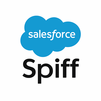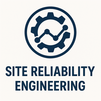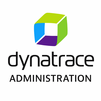
Salesforce Manufacturing Cloud course is designed to help professionals optimize manufacturing sales processes by leveraging sales agreements, forecasting, and customer insights. Participants will learn to align sales and operations, configure account-based forecasts, manage contract performance, and integrate with ERP systems. Ideal for sales teams, consultants, and Salesforce admins, this course enhances productivity, accuracy, and collaboration across the manufacturing value chain using Salesforce’s specialized cloud solution.
Salesforce Manufacturing Cloud Training Interview Questions Answers - For Intermediate
1. How do you configure a Sales Agreement in Salesforce Manufacturing Cloud?
Configuring a Sales Agreement involves creating the agreement record and associating it with the correct account, products, agreement terms, and pricing. You also need to define the commitment schedule, specifying quantity or revenue targets over a defined period. This setup can then be linked to performance data, allowing for real-time tracking and reporting. Proper role-based permissions should also be configured to manage access and visibility.
2. What is the importance of the Agreement Terms object in Manufacturing Cloud?
The Agreement Terms object captures detailed attributes of a Sales Agreement, such as start and end dates, committed quantities, pricing terms, and renewal details. It plays a key role in ensuring that performance tracking is accurate and aligned with the contractual expectations. This object helps operational teams plan based on realistic customer demand and contractual obligations.
3. How does Manufacturing Cloud improve forecast accuracy compared to traditional methods?
Manufacturing Cloud improves forecast accuracy by consolidating data from Sales Agreements, historical performance, and manual inputs. Forecasts are updated in near real-time and reflect the actual state of customer commitments. This reduces reliance on spreadsheets and improves decision-making by aligning planning with actual sales trends and customer-specific data.
4. What is the Forecast Metrics object used for in Manufacturing Cloud?
The Forecast Metrics object is used to define and track key metrics for forecasting, such as quantity, revenue, or units sold. It allows users to build customizable forecast models based on the specific goals of the business. These metrics feed into dashboards and reports to give insight into forecast performance and variances.
5. How can you customize the forecasting model in Manufacturing Cloud?
Forecasting models can be customized by defining metric fields, time periods, and forecast categories. Admins can use declarative tools like Flow and Process Builder, or write Apex code to customize forecast logic. This includes applying business rules to handle tiered pricing, seasonality, or multi-year contracts, making forecasts more representative of actual business dynamics.
6. What security model does Manufacturing Cloud use for Sales Agreements?
Sales Agreements follow Salesforce’s standard object-level and record-level security. You can control access using profiles, permission sets, sharing rules, and role hierarchies. For more granular control, manual sharing or criteria-based sharing rules can be used to ensure only relevant team members access specific agreement data.
7. How can you track the performance of a Sales Agreement over time?
Performance tracking in Sales Agreements is achieved by comparing actual orders or revenue against committed values defined in the agreement. The agreement performance dashboard allows users to visualize variances, trends, and fulfillment status. This helps in identifying gaps in commitment realization and taking corrective actions.
8. What is the difference between Forecasting Schedule and Performance Period in Manufacturing Cloud?
The Forecasting Schedule defines the intervals—monthly, quarterly, or yearly—over which forecasts are tracked. The Performance Period, on the other hand, refers to the specific time duration of the Sales Agreement. While the Forecasting Schedule breaks down data into measurable units, the Performance Period defines the agreement’s total validity window.
9. How can users collaborate on forecasts in Manufacturing Cloud?
Users can collaborate through chatter, shared dashboards, and collaborative forecasting tools within the platform. Sales reps can input forecasts manually or review system-generated suggestions. Managers can then approve, adjust, or reject forecasts. This fosters a collaborative environment that supports transparent and accurate forecast submissions.
10. Can Manufacturing Cloud support multi-currency operations?
Yes, Salesforce Manufacturing Cloud supports multi-currency operations, provided the organization has multi-currency enabled. This allows global manufacturers to create Sales Agreements, forecasts, and performance reports in various currencies. Conversion rates are automatically handled by Salesforce, ensuring consistency and accuracy across global operations.
11. What is the process to handle amendments in Sales Agreements?
Amendments are handled by cloning or versioning the existing Sales Agreement and applying the required changes. Salesforce maintains historical records of all versions, ensuring auditability. Once updated, the new version becomes active, and forecasting or performance tracking is redirected to the revised agreement data.
12. How do you handle product substitutions in a Sales Agreement?
Product substitutions can be handled by defining substitute products in the product catalog and associating them with the original agreement terms. If a committed product becomes unavailable, a substitution can be proposed and approved by stakeholders, ensuring continuity in fulfillment and minimizing impact on performance metrics.
13. How does Manufacturing Cloud support long-term customer relationship management?
Manufacturing Cloud helps manage long-term relationships by providing visibility into past agreements, current forecasts, and performance trends. It also allows manufacturers to identify high-value customers, renewal opportunities, and potential risks. Combined with collaboration tools, this data strengthens engagement and trust over time.
14. How can dashboards be tailored for operations teams using Manufacturing Cloud?
Dashboards for operations teams can include KPIs like forecast accuracy, fulfillment variance, production lead time, and agreement performance. These dashboards are built using Salesforce's native reporting tools and can be customized with filters, dynamic data sources, and role-specific views to ensure relevance and usability.
15. What reporting tools are available in Manufacturing Cloud to analyze agreement performance?
Salesforce provides native Reports and Dashboards, along with Einstein Analytics (CRM Analytics) for more advanced visualizations. Users can build standard or custom reports to track agreement performance, forecast trends, or rebate accruals. These tools support data-driven decision-making and operational optimization across sales and supply chain teams.
Salesforce Manufacturing Cloud Training Interview Questions Answers - For Advanced
1. How do you structure Sales Agreements in Manufacturing Cloud to support dynamic pricing models?
Sales Agreements in Manufacturing Cloud can be structured to support dynamic pricing by leveraging custom fields, agreement terms, and price book entries. Manufacturers often use tiered pricing based on committed volumes or customer-specific rates. Salesforce allows linking these pricing rules with agreement terms that can be adjusted based on customer segments, time periods, or promotional activities. By incorporating custom logic through Flows or Apex, businesses can update pricing based on real-time inputs like raw material costs or market fluctuations. Integrating CPQ (Configure, Price, Quote) adds another layer of automation and compliance, ensuring pricing remains accurate and transparent throughout the agreement lifecycle.
2. How would you architect a global Salesforce Manufacturing Cloud deployment for a multi-region manufacturer?
A global deployment requires a balance between centralized governance and localized flexibility. Start with a core data model that includes standard objects like Sales Agreements, Forecasting Metrics, and Account records. Use Record Types to distinguish regional variations in agreement structures, currency, languages, and workflows. Multi-currency and multi-language support should be enabled early in setup. Global hierarchies and role-based access control must be carefully defined to ensure data security and relevance per region. Leverage Experience Cloud for external collaboration with partners in different markets. Additionally, set up integration layers using MuleSoft or APIs for seamless communication with region-specific ERP systems.
3. What KPIs should be tracked using Manufacturing Cloud dashboards, and why?
Key Performance Indicators (KPIs) to track include Forecast Accuracy, Agreement Fulfillment Rate, Revenue Realization vs. Commitment, Rebate Utilization, and Sales Variance. Forecast Accuracy helps assess the reliability of projections used for planning. Agreement Fulfillment Rate shows how well actual sales match commitments, indicating customer satisfaction and operational efficiency. Revenue Realization vs. Commitment ensures financial alignment and helps prevent revenue leakage. Rebate Utilization tracks incentive program effectiveness, and Sales Variance highlights deviations between actual and expected performance. Monitoring these KPIs through real-time dashboards drives informed decision-making and enhances cross-functional alignment.
4. How can Manufacturing Cloud be configured to manage split shipments or partial deliveries?
To manage split shipments or partial deliveries, custom child objects or integration with ERP delivery modules are used. The Sales Agreement can remain tied to the total committed quantity, while each delivery (partial or full) is logged as a line item or delivery record with reference to the original agreement. Automation can be built using Flows to update agreement performance based on delivery status. This structure allows tracking fulfillment progress and identifying bottlenecks in the supply chain. Visual indicators on the agreement performance dashboards can alert users to incomplete deliveries, facilitating timely follow-up and corrective actions.
5. How can Manufacturing Cloud contribute to sustainability initiatives within manufacturing operations?
Manufacturing Cloud contributes to sustainability by enabling more accurate demand forecasting, which reduces overproduction and waste. Better alignment between customer demand and production schedules minimizes excess inventory, energy consumption, and material usage. Additionally, insights from forecasting and agreement data can help identify environmentally inefficient customer segments or product lines. Manufacturers can design sustainable incentive programs using Rebate Management, rewarding customers for eco-friendly behavior like bulk ordering or lower return rates. Integration with sustainability reporting platforms can help track carbon impact tied to sales and operations, aligning the organization’s commercial processes with ESG goals.
6. Describe how role hierarchy and data sharing settings should be implemented for a distributed sales organization.
In a distributed sales organization, role hierarchy must mirror the organizational structure—typically from global sales head down to regional managers and individual reps. Higher roles inherit access to lower-tier data, maintaining visibility while protecting sensitive information. For Sales Agreements, sharing rules should ensure that only account owners and their superiors can access agreement records, while preventing cross-regional data leakage. Use Criteria-Based Sharing for special cases such as key accounts managed across geographies. Public Groups and Permission Sets offer further flexibility for temporary access, and Field-Level Security ensures sensitive pricing or rebate information is only visible to authorized roles.
7. How would you use Salesforce Flow to automate the amendment of Sales Agreements?
Salesforce Flow can be configured to detect when specific fields (e.g., price, quantity, performance period) are changed in a Sales Agreement. Upon detection, the Flow can clone the current agreement, archive the original version, and apply changes to the new agreement while updating version metadata. Additionally, approval processes can be embedded in the Flow for changes requiring management sign-off. The Flow can also notify relevant stakeholders (sales rep, operations, finance) via email or Chatter. This automation ensures auditability, maintains data integrity, and eliminates the risk of human error during manual amendments.
8. How would you ensure audit-readiness in Manufacturing Cloud deployments?
Audit-readiness requires strong data governance, traceability, and process control. Every Sales Agreement must have version history, preferably with automated tracking via Flows or Apex triggers. Approval workflows should be used for high-risk changes, and audit fields (created by, modified by, timestamps) should be exposed in reports. Field history tracking must be enabled for key objects, including Sales Agreements and Forecasting Metrics. Custom logs for rebate adjustments or forecast overrides can provide added transparency. Role-based access control ensures sensitive data is not altered inappropriately. Periodic audit reports and snapshots support both internal reviews and external compliance audits.
9. How can Manufacturing Cloud facilitate vendor-managed inventory (VMI) programs?
In a VMI scenario, Manufacturing Cloud can be extended to include inventory tracking objects tied to Sales Agreements. Forecasts can be updated based on consumption data rather than manual entry, and performance metrics can reflect usage instead of delivered quantities. Integration with IoT systems or ERP inventory modules enables automatic updates of on-hand stock levels at the customer site. Reorder points and thresholds can trigger alerts or even automated replenishment workflows. This model improves inventory turnover, ensures service levels, and strengthens the manufacturer’s strategic role in the supply chain.
10. What considerations must be made when managing rebates for tiered volume incentives?
Managing tiered volume-based rebates requires a flexible structure that links rebate eligibility to cumulative performance across time periods. Agreement Terms should include volume brackets and corresponding rebate percentages. Real-time tracking of progress toward thresholds is essential, which can be done using custom objects and scheduled jobs. The system should support both retroactive and progressive rebate models. When integrated with actual sales data from ERP systems, accrual calculations become automatic. Clear reporting and dashboards help both internal teams and customers understand rebate status, reducing disputes and enhancing trust.
11. How would you handle the forecasting of configurable or custom-built products?
Forecasting configurable products involves integrating Manufacturing Cloud with CPQ and product configuration tools. Instead of forecasting individual SKUs, forecasting can be done at a product family or attribute level (e.g., engine size, material type). Custom metrics and objects can be used to estimate revenue based on likely configurations or historical patterns. CPQ rules can be utilized to validate feasible combinations and pricing logic. In some cases, AI models using past configurations can suggest demand probabilities for different customizations. This enables more accurate capacity planning and reduces the risk of production constraints or excess component inventory.
12. How do you manage agreement renewals and performance tracking across contract terms?
Agreement renewals are managed by setting up renewal workflows triggered before the end of the performance period. Salesforce can auto-generate renewal opportunities or cloned agreements, carrying over relevant terms and updating pricing or quantity based on historical performance and new targets. A comparison report between past performance and upcoming commitments can be generated for negotiation. Performance tracking across terms requires linking past and renewed agreements through parent-child relationships or reference fields, ensuring continuity. These mechanisms provide insight into long-term customer behavior and help in strategic account planning.
13. Describe a scenario where Manufacturing Cloud failed to meet business expectations and how it could have been prevented.
A common failure scenario is underutilization of the forecasting engine due to lack of integration with ERP systems. For example, a company implemented Manufacturing Cloud but did not integrate it with SAP’s order management system. As a result, actual performance data had to be manually uploaded, leading to delays, errors, and reduced trust in the platform. This issue could have been prevented by performing a thorough integration readiness assessment during the planning phase, involving ERP and IT stakeholders early, and piloting a small integration scope before scaling. Establishing robust middleware and change management would have further improved adoption.
14. How can you extend Manufacturing Cloud to support aftermarket sales or services?
Aftermarket sales—such as spare parts or maintenance contracts—can be supported by extending Sales Agreements with additional record types and custom fields. Forecasting can include service intervals or expected part replacements. Integration with Service Cloud allows tracking of warranties, installed base, and service histories. Automated workflows can notify customers of upcoming service requirements or consumable replenishments. Rebate programs can be structured to reward customers for continuous service engagement. Aftermarket insights can also influence core product design and inform upselling strategies through predictive maintenance and customer behavior analysis.
15. What is the strategic value of deploying Manufacturing Cloud alongside Service Cloud and Experience Cloud?
Combining Manufacturing Cloud with Service Cloud and Experience Cloud creates a full-service, customer-centric ecosystem. Manufacturing Cloud handles forecasting and agreements, Service Cloud manages warranty, repairs, and field service, while Experience Cloud enables direct customer or partner interaction via portals. This integrated stack ensures a seamless flow of information across departments and enhances the Customer 360 vision. For example, service requests can impact forecasts if recurring issues affect future demand. Customers can log issues, review agreement terms, or view forecast performance via self-service portals. The strategic benefit lies in unifying sales, service, and collaboration to drive loyalty, operational efficiency, and long-term profitability.
Course Schedule
| Nov, 2025 | Weekdays | Mon-Fri | Enquire Now |
| Weekend | Sat-Sun | Enquire Now | |
| Dec, 2025 | Weekdays | Mon-Fri | Enquire Now |
| Weekend | Sat-Sun | Enquire Now |
Related Courses
Related Articles
Related Interview
Related FAQ's
- Instructor-led Live Online Interactive Training
- Project Based Customized Learning
- Fast Track Training Program
- Self-paced learning
- In one-on-one training, you have the flexibility to choose the days, timings, and duration according to your preferences.
- We create a personalized training calendar based on your chosen schedule.
- Complete Live Online Interactive Training of the Course
- After Training Recorded Videos
- Session-wise Learning Material and notes for lifetime
- Practical & Assignments exercises
- Global Course Completion Certificate
- 24x7 after Training Support











 Join our Live Instructor-Led online classes delivered by industry experts
Join our Live Instructor-Led online classes delivered by industry experts